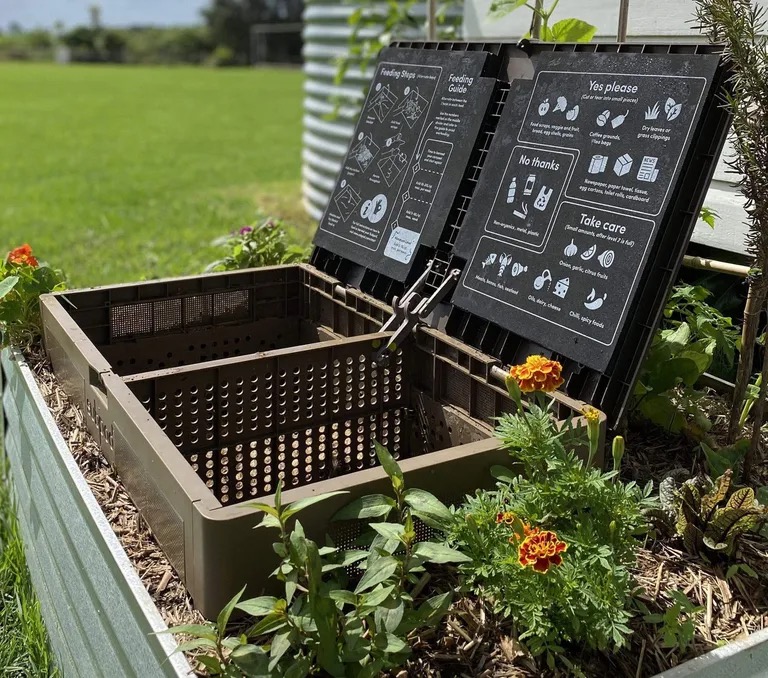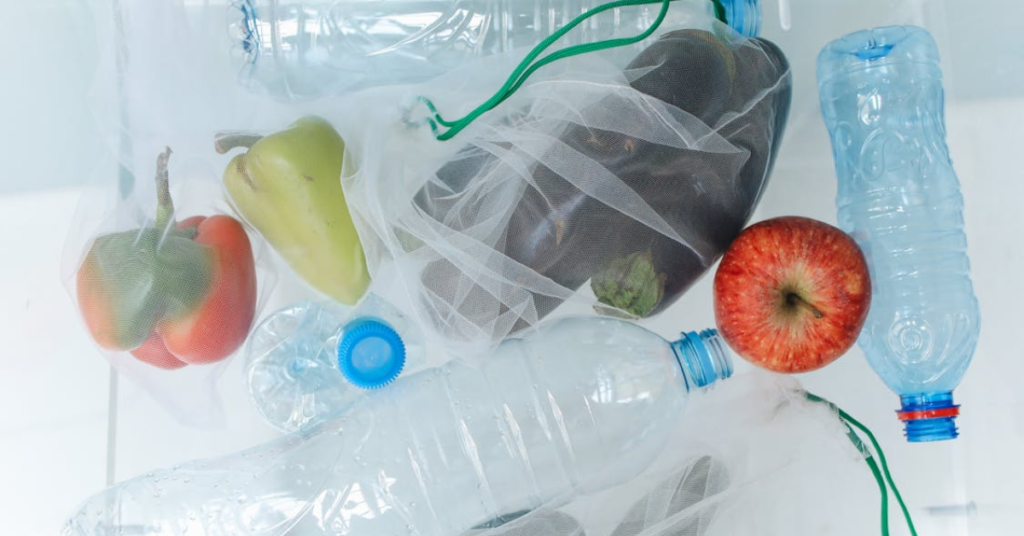I’ve been on a mission to make my home more eco-friendly by reducing plastic waste, and one of the first steps I took was switching to compostable bags. In this article, I’m going to share my journey and explain how I chose the right compostable bag for my home composting system.
What Are Compostable Bags and Why Do I Use Them?

I first discovered compostable bags while researching sustainable waste management options. Unlike traditional plastic bags that can last for centuries in landfills, compostable bags are made from natural, plant-based materials such as cornstarch and biodegradable polymers. These materials allow the bags to break down quickly in the right composting conditions, transforming waste into nutrient-rich compost without leaving harmful residues.
For me, the switch was simple: I wanted to reduce my environmental footprint. By using compostable bags, I not only help cut down on plastic pollution but also contribute to a circular economy where waste is turned into a valuable resource. Plus, the idea of turning kitchen scraps into compost that nourishes my garden was a win-win.
Useful Link:
Learn more about sustainable waste management on the EPA’s Sustainability Guidelines.
My Research: Types of Compostable Bags
As I dove deeper into my research, I found that there are several types of compostable bags available, each designed for different purposes. Here’s what I discovered and eventually decided to try in my own home:
1. Kitchen Compost Bags
Overview:
Kitchen compost bags are specifically designed for collecting food scraps and organic waste from your kitchen. They are small enough to fit into indoor compost bins, making them ideal for everyday use.
Key Features:
- Made from natural, biodegradable materials.
- Designed to control odors.
- Come in various sizes to fit different kitchen bins.
2. Compostable Bags for Compost Bins
Overview:
These bags are larger and more robust, designed to line outdoor or industrial compost bins. They need to be durable enough to handle heavier and more varied waste loads.
Key Features:
- Suitable for larger composting systems.
- Often carry certifications such as ASTM D6400 or EN 13432.
- Provide durability while remaining fully compostable.
3. Compostable Potty Liners
Overview:
Compostable potty liners are used in portable toilets or composting potties. They help contain waste and manage odors in a hygienic way, making them perfect for both home and on-the-go situations.
Key Features:
- Designed for odor control.
- Engineered to break down quickly in composting conditions.
- Ideal for situations where managing human or pet waste is necessary.
4. Small Waste Bags and Biodegradable Dustbin Bags
Overview:
These bags are versatile and not only used for composting organic waste but also for general waste management. They work well in areas where you want to reduce your overall plastic usage and ensure waste breaks down naturally over time.
Key Features:
- Suitable for everyday household waste.
- Help reduce overall plastic accumulation.
- Available in a variety of sizes for different dustbin capacities.
A Comparison Table: My Findings at a Glance
To help me decide, I created a comparison table that summarizes the key differences among the compostable bag types I explored. Here’s a snapshot of what I found:
| Type | Ideal Use | Material | Certifications | Key Benefit |
|---|---|---|---|---|
| Kitchen Compost Bags | Food scraps in the kitchen | Cornstarch-based, PLA blends | ASTM D6400, EN 13432 | Perfect fit for small bins, odor control |
| Compostable Bags for Compost Bins | Outdoor/industrial composting | Plant-based polymers, reinforced | ASTM D6400, EN 13432, BPI | Durable for heavy loads, versatile |
| Compostable Potty Liners | Portable toilets, compost potties | Specialized biodegradable blends | Varies by manufacturer | Excellent for odor management and hygiene |
| Small Waste/Biodegradable Dustbin Bags | General waste, eco-friendly use | Mixed biodegradable materials | Varies | Reduces plastic waste in everyday scenarios |
Note: I always check for updated certifications and product details with each supplier before purchasing.

How I Chose the Right Compostable Bag
After reviewing the different types, here’s how I narrowed down my choices and eventually found the best compostable bag for my needs:
1. Defining the Purpose
The first step was to decide exactly what I needed the bag for. Since I primarily needed to manage kitchen scraps, I started with kitchen compost bags. I also wanted to test compostable bags for my outdoor compost bin because I sometimes have heavier garden waste. For specific setups like my compostable potty system, I looked into specialized liners.
This clarity helped me focus on products that matched each use case rather than wasting time on generic solutions.
2. Checking the Size and Capacity
I measured my indoor and outdoor bins to ensure that the bags would fit perfectly. A bag that’s too small or too large can cause problems. For my kitchen bin, I needed a bag that could comfortably fit while being easy to tie up and dispose of. For the outdoor compost bin, I opted for larger, reinforced bags that could handle more weight without tearing.
3. Researching Material Composition
Material quality is key for me. I prefer bags made from high-quality, plant-based materials that guarantee complete compostability. I researched the materials behind various products and opted for those that used natural ingredients like cornstarch and PLA, as these tend to decompose faster and more reliably than synthetic blends.
4. Verifying Certifications
Certifications play an important role in my decision-making process. I always look for products that carry recognized certifications such as ASTM D6400, EN 13432, or BPI Certification. These labels reassure me that the bag will break down in a composting environment without leaving harmful residues. I always cross-check with the supplier’s website and third-party resources to confirm these details.
Useful Link:
For more details on compostable bag certifications, visit the Biodegradable Products Institute (BPI).
5. Balancing Cost and Quality
While I am willing to pay a bit more for quality, I also compared prices among different brands. I found that reputable suppliers with high customer reviews tended to be a bit more expensive, but their products were more reliable and sustainable. In my experience, spending a little extra was worth the long-term benefits of reduced waste management issues and improved compost quality.
Practical Tips for Storage and Handling
After selecting the right bags, I learned that proper storage and handling are crucial to maintain their effectiveness:
Storage Conditions
I store all my compostable bags in a cool, dry place away from direct sunlight. Exposure to heat or moisture can start the decomposition process prematurely, which is something I want to avoid until I’m ready to use them. A dedicated shelf in my pantry works perfectly for this purpose.
Shelf Life
I always check the manufacturer’s recommended shelf life when purchasing compostable bags. Over time, the materials can weaken, so I make sure to rotate my stock to use the oldest ones first. This not only helps maintain their integrity but also ensures that I’m getting the maximum benefit from each bag.
Handling Techniques
When I fill my compostable bags, I’m careful not to overfill them. Overfilling can lead to stretching or tearing, which compromises the bag’s strength during the composting process. I gently place waste into the bag and secure it properly before disposing of it. For smaller bags, like the compostable potty liners, I handle them with extra care to avoid accidental punctures.
Moisture Control
While moisture is necessary for the composting process, too much moisture before use can weaken the bag. I ensure that the waste I place in the bags isn’t excessively wet. This is particularly important for kitchen scraps, which can sometimes be very moist. I let the waste settle or drain off excess water when necessary.
My Real-World Experience

After a few months of using compostable bags, I’ve seen several positive changes in my household:
- A Cleaner Composting Process:
My kitchen and outdoor bins are much cleaner. The bags keep the compost contained, making it easy to transfer the contents to my compost pile or facility. - Improved Garden Soil:
The compost I produce is free from plastic residues. My garden soil has become richer, and I’ve noticed healthier plants and better yields. It’s gratifying to see my efforts contribute to a thriving garden. - Environmental Impact:
Knowing that my waste is breaking down into harmless compost instead of polluting the environment gives me great satisfaction. I feel like I’m making a tangible contribution to reducing plastic waste and protecting our planet. - Cost Savings Over Time:
Although the compostable bags were a bit more expensive initially, the benefits have outweighed the cost. The improved compost quality has allowed me to reduce spending on commercial fertilizers, and the overall waste management process has become more efficient.
Useful Link:
For more insights on sustainable home composting, I highly recommend reading articles on Compost Now.
Conclusion
Switching to compostable bags has been one of the most rewarding changes I’ve made in my journey toward a sustainable lifestyle. By carefully selecting the right bag—whether it’s a kitchen compost bag, a durable liner for outdoor compost bins, or even specialized compostable potty liners—I’ve been able to improve my home composting system significantly.
Every decision I make, from verifying certifications and checking material compositions to ensuring proper storage and handling, has helped me create a more efficient and eco-friendly waste management process. Not only do I feel better about reducing my household’s plastic footprint, but the high-quality compost produced has also enhanced my garden soil, leading to healthier plants and a more vibrant garden.
I invite you to explore your own options for compostable bags and see the positive impact they can have on your life. Every small step matters, and together, these actions add up to a healthier environment and a greener future.
So, which compostable bag will you choose to make a difference in your home and help protect our planet?

